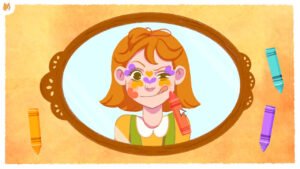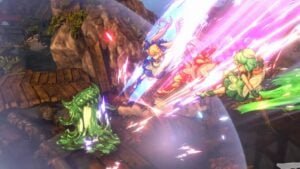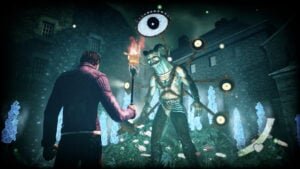CD Projekt Red has made a name for themselves by building massive fictional worlds. With The Witcher, and now Cyberpunk 2077, they have crafted an environment teaming with life and possibility.
Utilizing the Cyberpunk roleplaying system, Cyberpunk 2077 promises a rich, open world experience that will let you, the player, build the character you want and interact with the city as you see fit. It is a staggering undertaking, but if the demo is anything to go by, they are making this promise a reality.
The skill and talent needed to build these games is staggering, relying on big teams all working together to allow the seamless open world feel alive. At Gamescom 2018 CGMagazine had the chance to sit down with Maciej Pietras, lead cinematic animator for Cyberpunk 2077. He started at CD Projekt Red working on The Witcher and both expansions, before moving over to the Cyberpunk Team. As he outlines the process of building this new experience, Pietras gives a good look at the complexity involved, the attention to detail, and the care put towards the players end experience that make Cyberpunk 2077 such an anticipated game hitting consoles and PC.
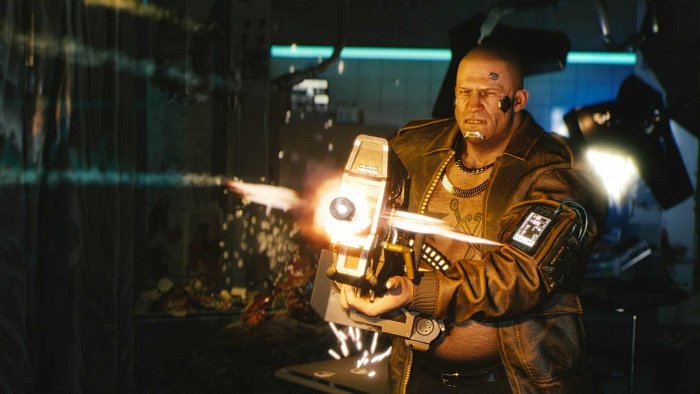
CGMagazine: CD Projekt is known for their cinematic experiences, how much of a challenge was it going into Cyberpunk 2077 with this level of pressure and expectation?
Maciej Pietras: I think it revolves around how you define the phrase “cinematic experience,” because what we do is tell a story in an open world that is also an RPG. At the end of the day, is still a heavily narrative driven game, and just because of that we just redefine how we approach “Cinematic-ness”. How we tackled story in The Witcher, of course, is we utilize the camera work; we worked with editing, character composition, with framing and editing very much as a cornerstone of the dialogue and cutscenes in The Witcher. For Cyberpunk what we are doing is using the open world and RPG experience, splashing them together and wrapping them in this interactive scene system overcoat.
So, because of that overcoat, what we think about storytelling and how to create this narrative experience always involves thinking about how the player will experience that from the first-person perspective. One of the ways we think about designing is around the experience of cinematic moments. For example, we are just talking right now, you’re sitting here and let’s say I am the player. So I, as a player, would Point at your bag and ask you why is it grey and you could react to that or not, because you might not be interested, or you may just nod and wonder why we are talking about your bag.
This is kind of how we approach this cinematic storytelling and transforming the experience with it; thinking that this is a living breathing world. The NPC’s set in that world are fully fleshed out characters [and] not just templates, because we approach design like that. It means that you somehow got here. You’re here, you’re doing your job, you’re working, and I approach you and we have a discussion. The outcome is mostly dependent on the player choice. I could pull out the gun and the conversation will go in a very different direction. This example outlines how we think about cinematics and narrative content. So obviously it’s a huge challenge when compared to The Witcher. It’s an open world, one big city that you can explore. There are no loading screens, except for fast travel, and because of that, we have to keep the player as immersed and focus on what’s happening as possible.

CGMagazine: How as designers do you ensure players have a seamless experience with so many different types of narrative tools at play? How do you ensure they feel they are part of that world, part of the overall experience while still showing visual flares, and setpiece moments?
Maciej Pietras: Yeah that’s really a cumulative task of all the teams in the company because you don’t think about it. The reason you’ll notice certain elements is not just because someone decided to put that thing there. It’s a cumulative experience because the game designer will plan out how the level works, the level designer will place structures but they also check out how it will all work with the environment team that builds their environment around it. And then you have the open world team who are placing the whole environmental elements like characters, vendors, and prostitutes walking the city.
And then you have cinematic designers who are creating the narrative experience that is strictly connected to that one person. And then you have the lighting guys who are working to make sure that if we want to showcase that specific character, we probably do some light showers or maybe a skylight that will highlight with light and show that you might be able to talk to this guy. We can also use light to show all those foods vendors, to actually make sure that the player looks at that point they may find the most Interesting.
CGMagazine: Cyberpunk 2077 has a very distinctive style, what was it like crafting that, and how did all the teams at the studio work to make that come to life?
Maciej Pietras: It’s a never-ending process. I think the best way to describe it is: what we do at CD Projekt is try to create this iterative process of feedback and iteration. So basically when we make something we look at it very closely from all the angles and we get feedback and iterate on that and then we’ll pick it up again and iterate, etc. This is because we are not using any procedural aspects to create the world while still developing our tools sets. I think every team has developed some kind of toolsets that not only speed up their work but also increase quality and the way it all binds together is literally though reviewing the game constantly. The game has to run over again, all the time. Regardless if it is done yet, or not, it doesn’t matter, it has to be played constantly, and you basically iterate based on that
CGMagazine: Is there ever concepts you or the team at the studio come up with that simply can not be done due to hardware limitations?
Maciej Pietras: Oh no, actually from the top we knew we were developing the game for PC, PS4 and Xbox One. And we started the process of optimization right at the start. So that’s probably what you see running the demo is a PC with like an i7 and 1080TI, so it’s not astronomical specs. Basically, because we are thinking from scratch about optimization, how streaming works, how to introduce global illumination for instance without overwhelming the PC or the GPU. Now we take those things into account right at the start and optimize for that.
CGMagazine: With that in mind, did you ever have a concept that you wanted to do that could not work due to the optimizations, or did the tech allow you to make all ideas a reality?
Maciej Pietras: Yeah absolutely. You know we’re working on the Red Engine which we are still upgrading. You know we are always finding new ways to use the new technical features that speed up the work and there are very low costs when it comes to the optimization part, and as I said, that we have a team of programmers who are dedicated to work on optimization. Simply because of that, I don’t think we ever reached that point and say something is too costly based on hardware requirements. That did not happen yet. What we showed in the demo was running in real runtime so there’s nothing there that we were trying to hide.
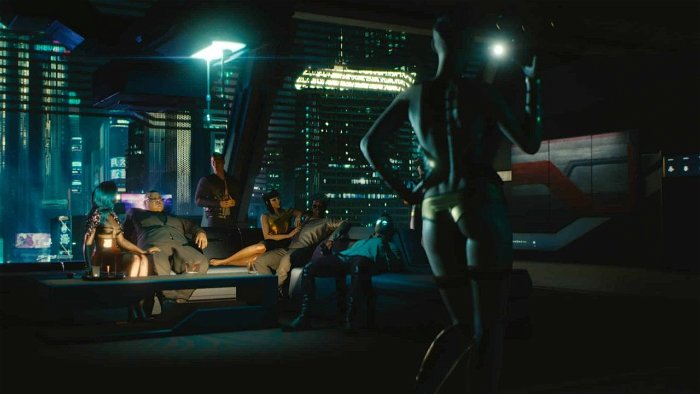
CGMagazine: Due to the fact you are giving the player the freedom to customize their character in any way they see fit, including gender, did that change any aspect of how the story would play out?
Maciej Pietras: Of course, this is an RPG, and because of the character creation process, you’re defining your body type at the beginning. Because of that, you take your game gender as a choice and you as a player represents that role throughout the game. Yes you can try and do anything, but it is not always up to you, it is also up to the NPC’s in the game world. As I said before we treat characters as characters, so that means they’re predefined people. They are predefined characters who have different sexual orientations and wants. So simply because of that you might as a male or female gender player in the game try to romance an NPC but that might not happen because of that character’s orientation and their preferences. This is a conscious design choice that we want to give the player as much freedom as they want to make sure that the game they play regardless of their body type choices to fit their approach the way they want to go as their version of V a mercenary, a cyberpunk mercenary.
To read the full interview with CD Projekt Red, pick up Issue #35 of CGMagazine


